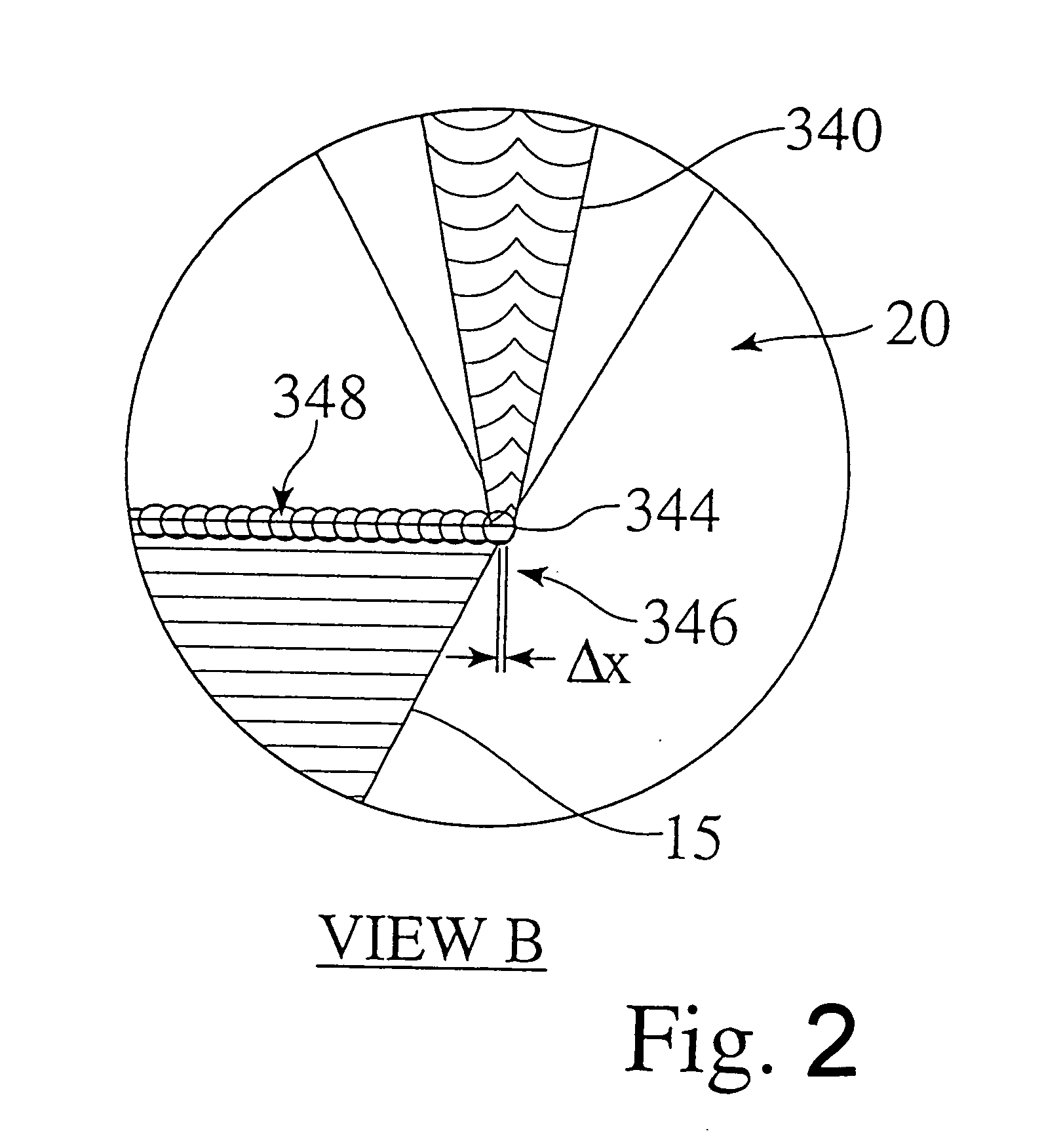Greater angle and overhanging materials deposition
a technology of material deposition and angle, applied in the field of material deposition, can solve the problems of inability to make very complex parts of solid, hollow, or latticed construction, and the process then was very inaccurate, and achieve the effect of convenient collection
- Summary
- Abstract
- Description
- Claims
- Application Information
AI Technical Summary
Benefits of technology
Problems solved by technology
Method used
Image
Examples
Embodiment Construction
[0040] The LENS® system dispenses metals in patterns preferably dictated by three-dimensional CAD models. Guided by these computerized blueprints, the system creates material structures by depositing them, preferably one layer at a time. The system preferably uses a laser, such as a high-powered Nd:YAG laser, to strike a target and produce a preferably molten pool. Through a deposition head, a nozzle then preferably propels a precise amount of powdered metal into the pool to increase the material volume. A layer is built to the CAD geometric specifications as the positioning system moves the target under the laser beam in the X-Y plane. The lasing and powder-deposition process repeats until the layer is complete. The LENS® system then refocuses the laser in the Z direction, normal to the target, until the unit builds layer upon layer and completes the material version of the CAD model. The standard mode of operation includes 2.5 axes of motion, computer control, a controlled atmosph...
PUM
| Property | Measurement | Unit |
|---|---|---|
| Fraction | aaaaa | aaaaa |
| Angle | aaaaa | aaaaa |
| Angle | aaaaa | aaaaa |
Abstract
Description
Claims
Application Information
 Login to View More
Login to View More - R&D
- Intellectual Property
- Life Sciences
- Materials
- Tech Scout
- Unparalleled Data Quality
- Higher Quality Content
- 60% Fewer Hallucinations
Browse by: Latest US Patents, China's latest patents, Technical Efficacy Thesaurus, Application Domain, Technology Topic, Popular Technical Reports.
© 2025 PatSnap. All rights reserved.Legal|Privacy policy|Modern Slavery Act Transparency Statement|Sitemap|About US| Contact US: help@patsnap.com



